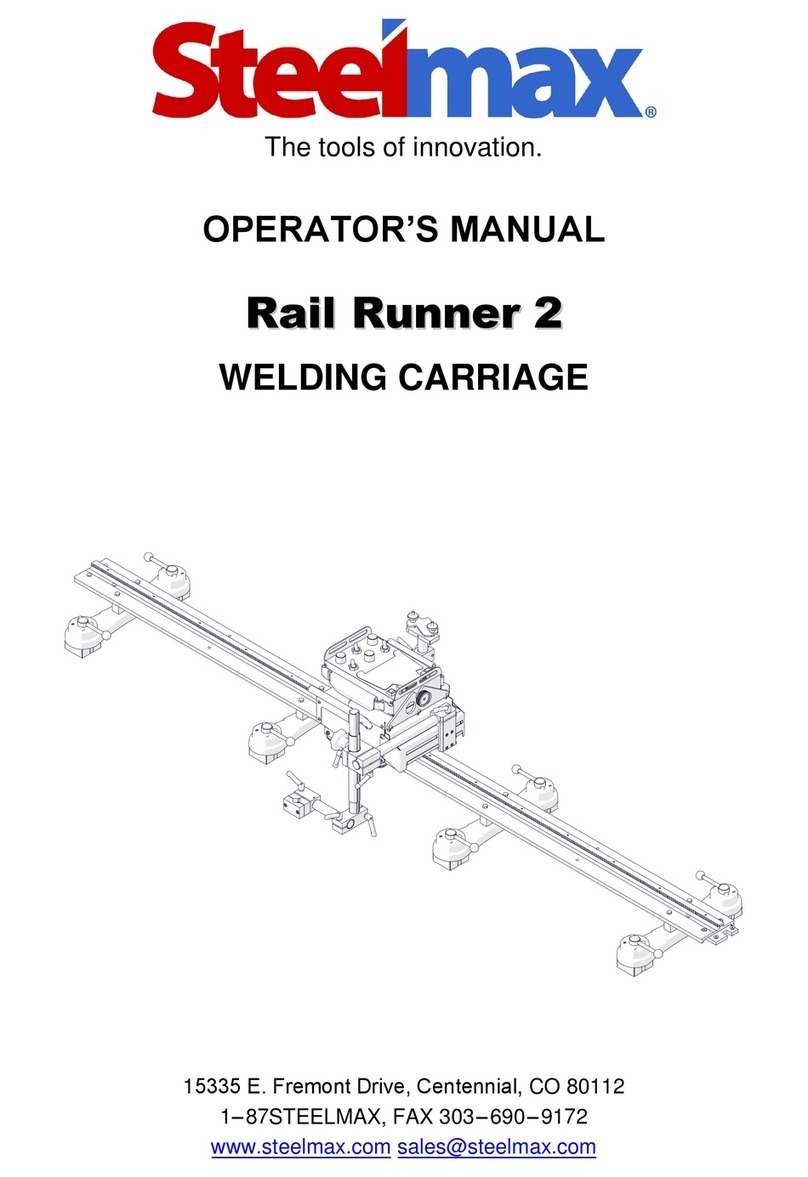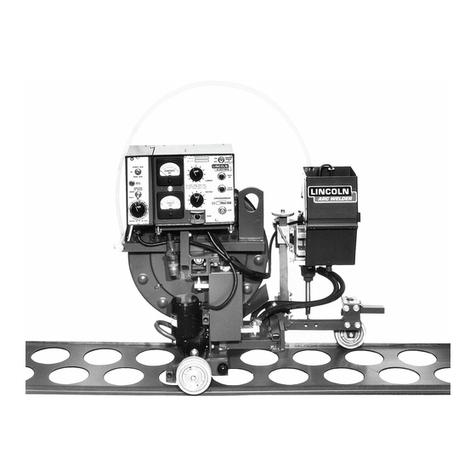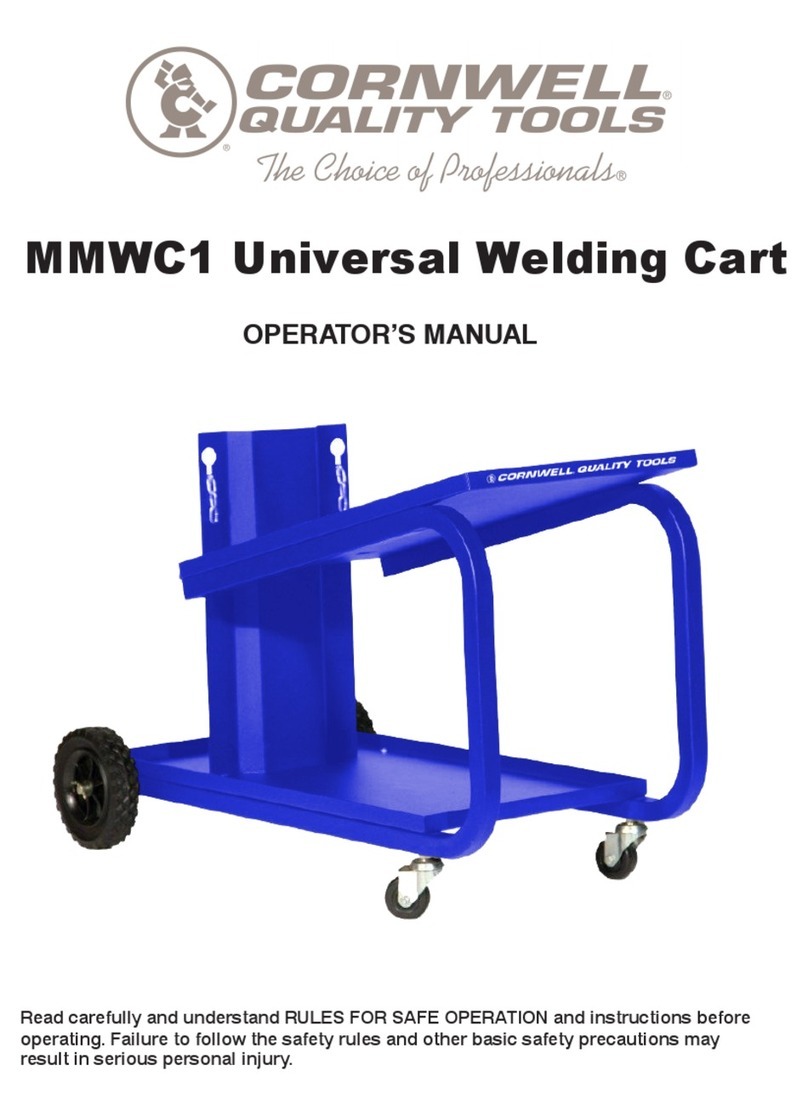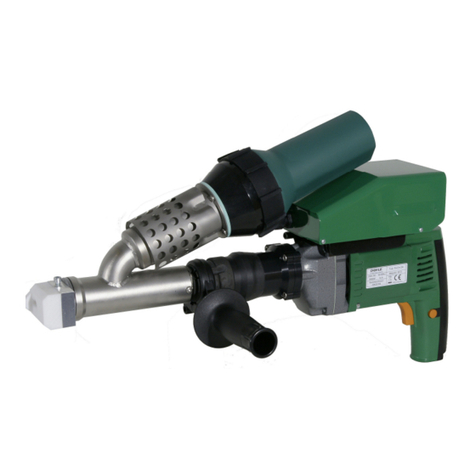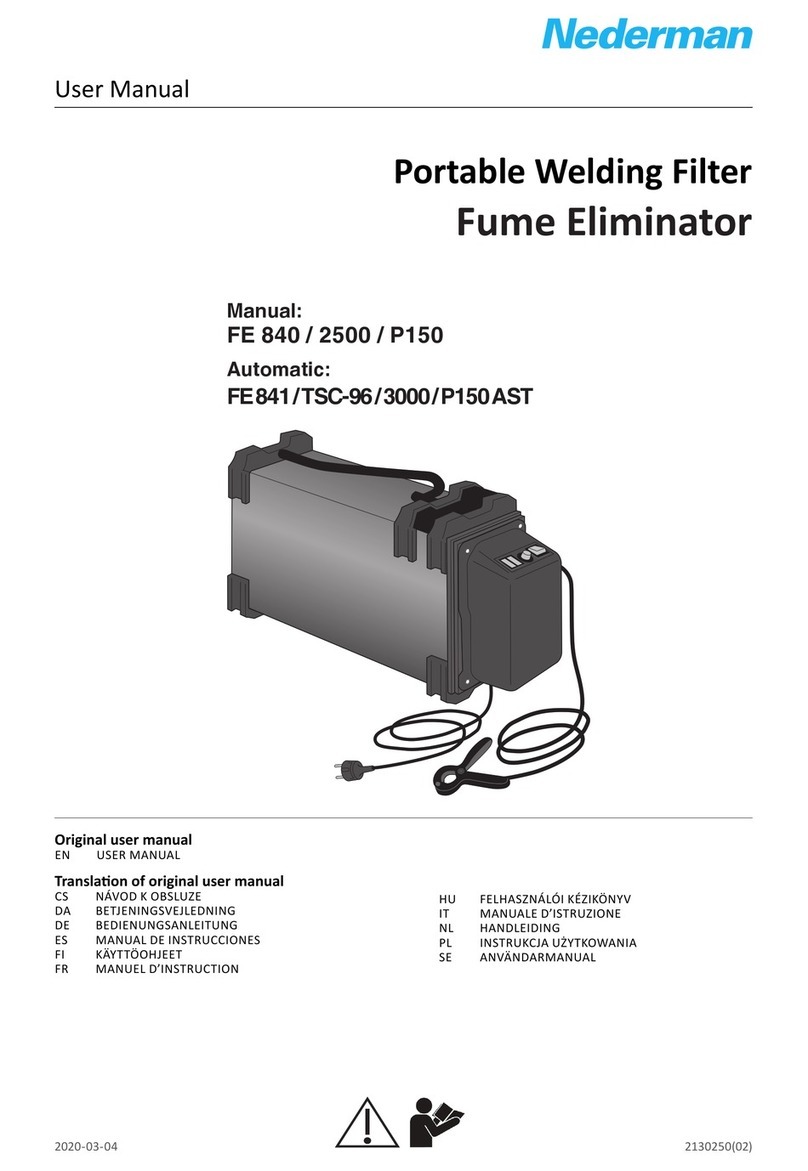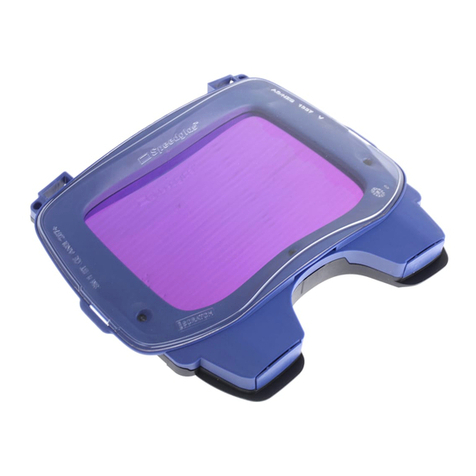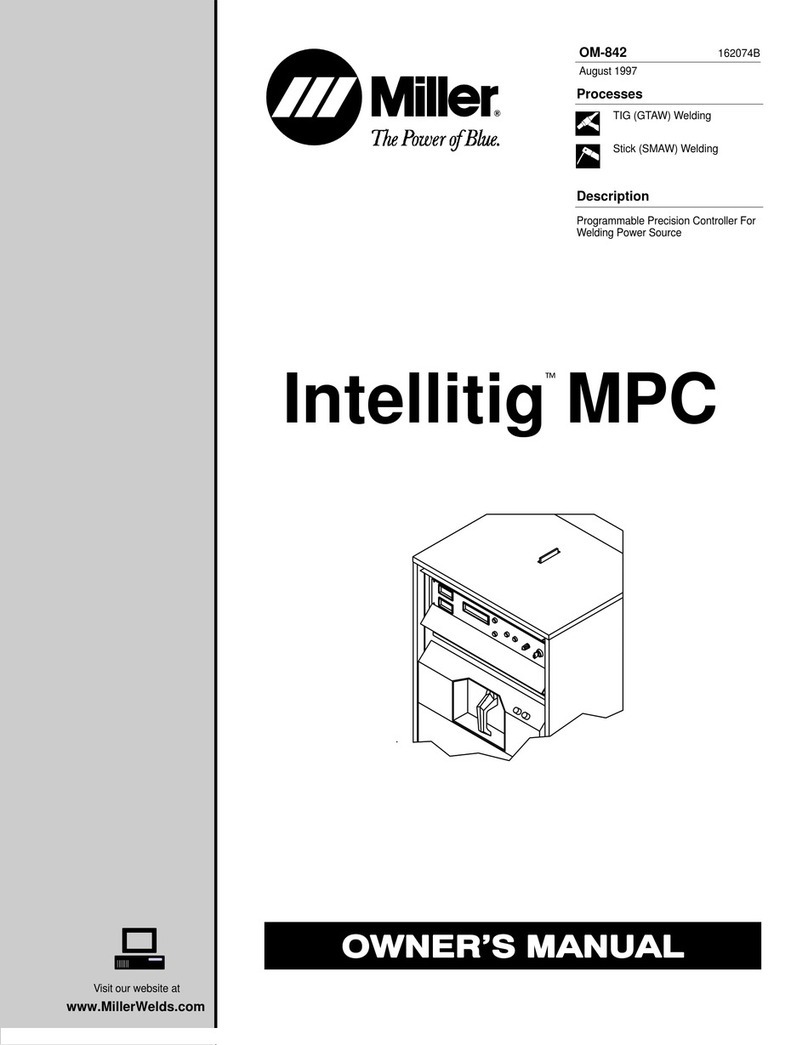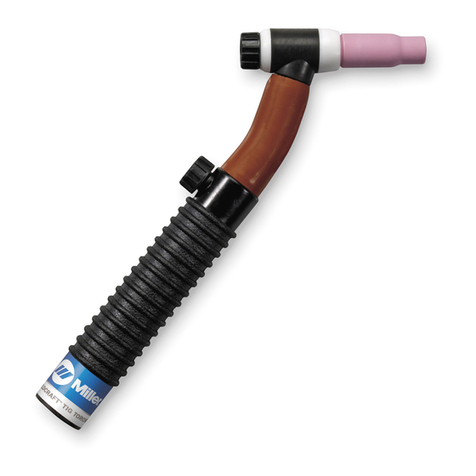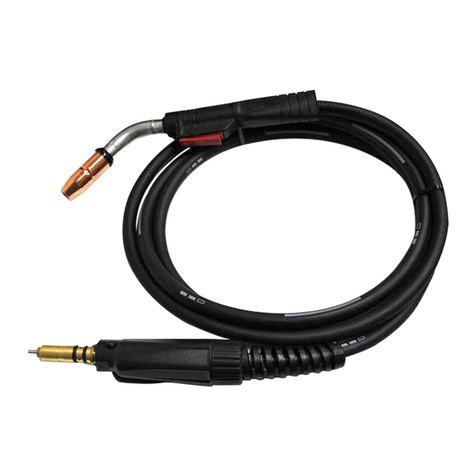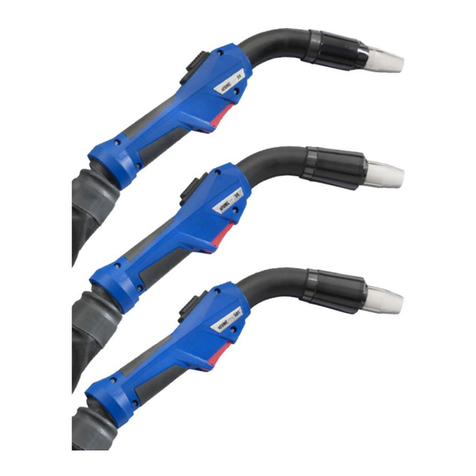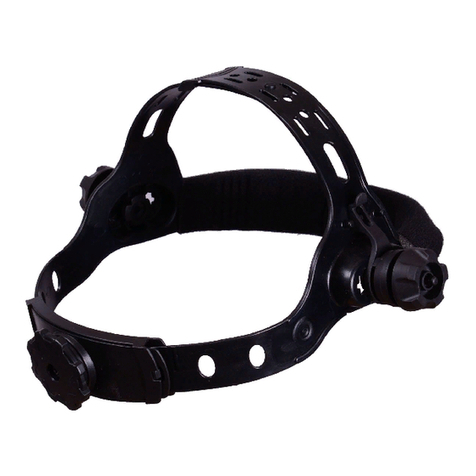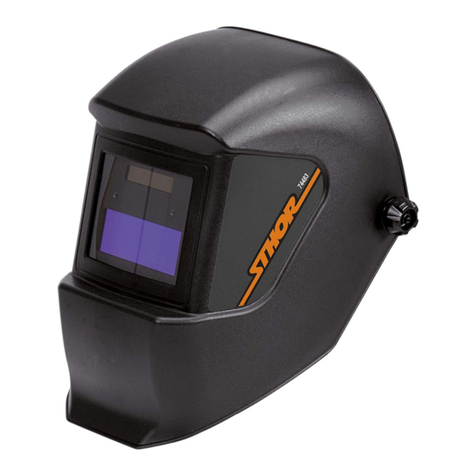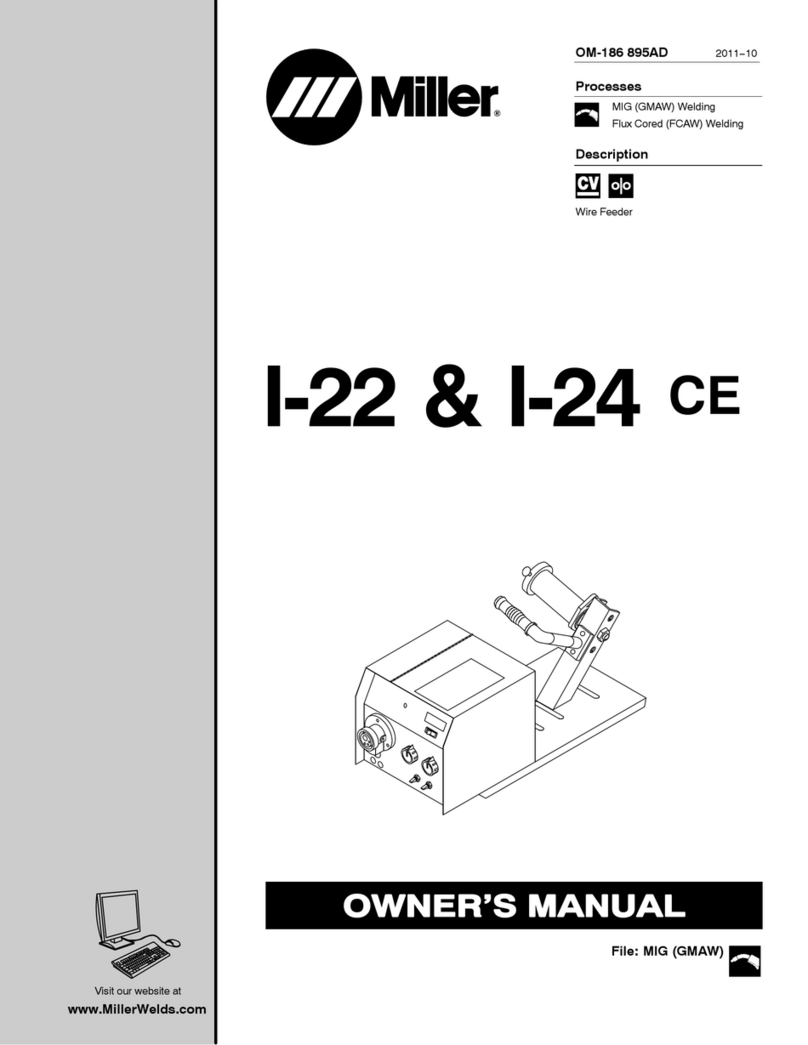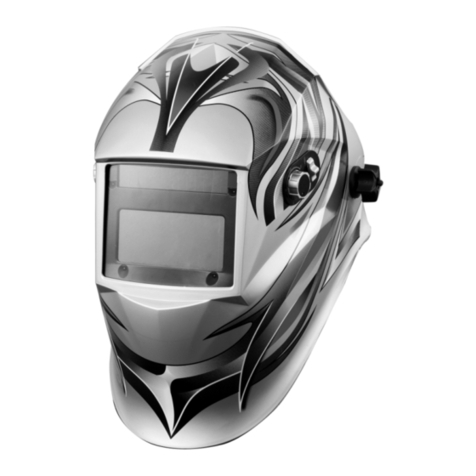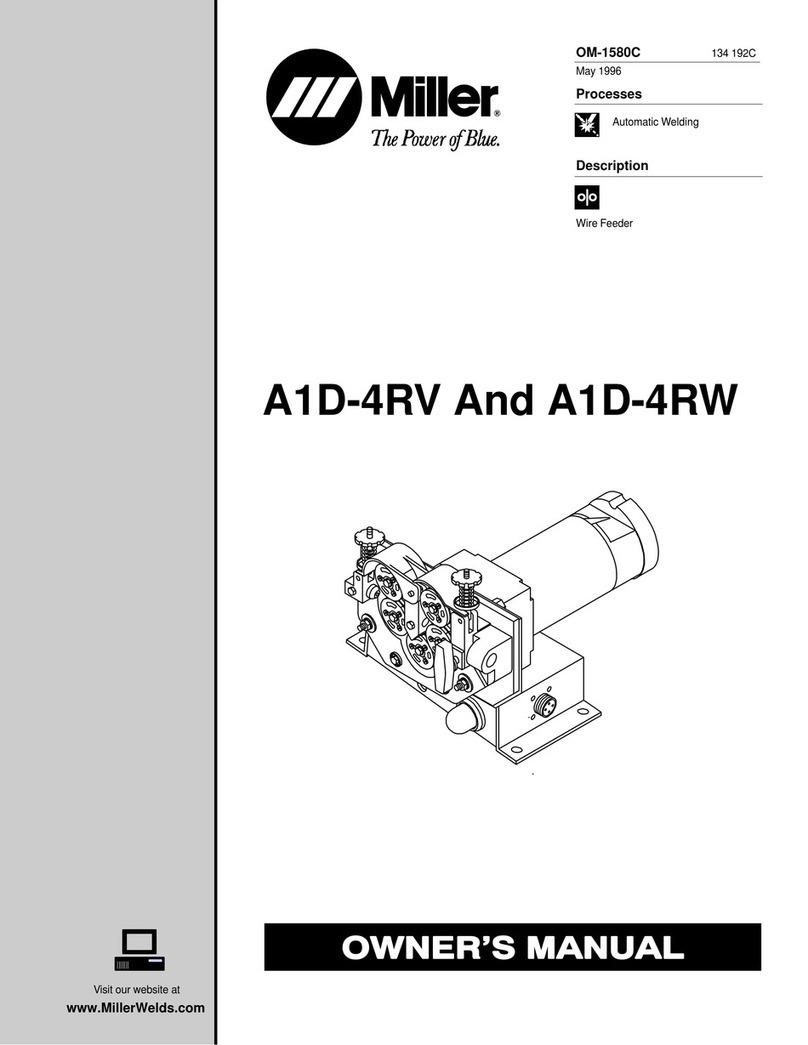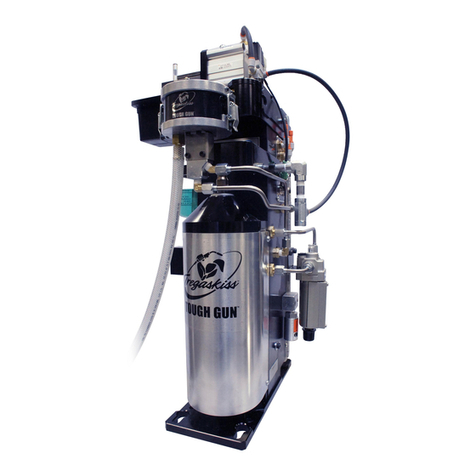SteelMax ARC Runner User manual

Contents
1.GENERAL INFORMATION................................................................................................ 3
1.1. Application................................................................................................................. 3
1.2. Technical data............................................................................................................ 4
1.3. Equipment included ................................................................................................... 5
1.4. Dimensions................................................................................................................ 6
1.5. Design ....................................................................................................................... 7
2.SAFETY PRECAUTIONS.................................................................................................. 8
3.STARTUP AND OPERATION...........................................................................................10
3.1. Preparing..................................................................................................................10
3.2. Connecting to welding circuits...................................................................................11
3.3. Positioning at the worksite ........................................................................................12
3.4. Starting .....................................................................................................................14
3.5. Programming ............................................................................................................14
3.6. Welding procedure....................................................................................................16
3.7. Operating..................................................................................................................17
3.8. Using oscillator (accessory) ......................................................................................18
3.9. Troubleshooting........................................................................................................21
4.MAINTENANCE ...............................................................................................................22
5.ACCESSORIES................................................................................................................23
5.1. Oscillator...................................................................................................................23
5.2. Torch clamps............................................................................................................25
5.3. Rods.........................................................................................................................26
5.4. Torch holders............................................................................................................27
5.5. Torch extension arm .................................................................................................29
5.6. Guide arms...............................................................................................................30
5.7. Dual torch mount.......................................................................................................35
5.8. Flexible guide set......................................................................................................36
5.9. Guide adjustment tool...............................................................................................38
5.10. 76 mm cross slide...................................................................................................39
5.11. Display protection shield .........................................................................................40
5.12. Fall arrester.............................................................................................................40
5.13. Stainless steel wheels.............................................................................................41
6.115–230 V EXPLODED VIEWS AND PARTS LIST..........................................................42
7.42 V EXPLODED VIEWS AND PARTS LIST....................................................................47
8.115–230 V WIRING DIAGRAM.........................................................................................52
9.42 V WIRING DIAGRAM ..................................................................................................53
10. DECLARATION OF CONFORMITY...............................................................................54
11. QUALITY CERTIFICATE................................................................................................55
12. WARRANTY CARD........................................................................................................56

ARC Runner
ARC Runner Operator’s Manual
3
1. GENERAL INFORMATION
1.1. Application
The ARC Runner is a welding carriage designed to make continuous or stitch butt
and fillet welds. The carriage allows MIG/MAG torches with the handle diameter of
16–22 mm (0.63–0.87’’). It is fixed by permanent magnets and can work in the following
welding positions: PA/1F/1G, PB/2F, PC/2G, PD/4F, and PE/4G.
Accessories allow, for instance, welding with oscillation, using torches with the
handle diameter larger than 22 mm, using two torches at the same time, and guiding
the carriage along outside edges, lap joints and templates, walls low or with holes, and
on ceilings, pipes, and tanks.

ARC Runner
ARC Runner Operator’s Manual
4
1.2. Technical data
Voltage
1~ 115–230 V, 50–60 Hz
1~ 42 V, 50–60 Hz (60 V DC)
Power
25 W
Welding position (according to
EN ISO 6947 and AWS/ASME)
Horizontal
PA / 1F / 1G
PB / 2F
PC / 2G
PD / 4F
PE / 4G
Vertical
PF / 3F / 3G (with optional oscillator)
PG / 3F / 3G (with optional oscillator)
Minimum path curve radius
1500 mm (5 ft)
Torch type
MIG/MAG
Torch diameter
16–22 mm (0.63–0.87’’)
Maximum torch reach
80 mm (3.15’’)
Maximum allowed cable weight
Horizontal work
12 kg (27 lbs)
Vertical work
8 kg (18 lbs)
Minimum workpiece thickness
5 mm (0.20’’)
Ground clearance
5 mm (0.20’’)
Horizontal pulling force
220 N (48 lbs)
Vertical pulling force
150 N (33 lbs)
Cross slide adjustment range
0–35 mm (0–1.38’’, up-down, left-right)
Guide arm adjustment range
0–75 mm (2.95’’)
Horizontal speed
0–120 cm/min (0–47.2 in/min)
Vertical speed
0–110 cm/min (0–43.3 in/min)
Noise level
Less than 70 dB
Weight
14 kg (31 lbs)

ARC Runner
ARC Runner Operator’s Manual
5
1.3. Equipment included
1
Carriage
1 unit
2
Foam-filled cardboard box
1 unit
3
Cable anchor
1 unit
4
Short rod torch holder with clip
1 unit
5
3 m (10 ft) power cord
1 unit
6
6.5 m (21 ft) arc ignition cable
1 unit
7
4 mm hex wrench
1 unit
–
Operator’s Manual
1 unit
1
2
3
4
5
6
7

ARC Runner
ARC Runner Operator’s Manual
6
1.4. Dimensions
411 mm (16.2’’)
368 mm (14.5’’)
447 mm (17.6’’)

ARC Runner
ARC Runner Operator’s Manual
7
1.5. Design
Lug for fall arrester
Arc ignition socket
Control panel
Cross slide
Oscillation socket
Guide arm
Power switch
Limit switch
Magnet ON/OFF lever
LCD display
Knob F1
Knob F2
Arc ignition switch
(TEST / O / I)
Travel direction switch
(Left / O / Right)
Speed adjustment knob

ARC Runner
ARC Runner Operator’s Manual
8
2. SAFETY PRECAUTIONS
1. Before starting, read this Operator’s Manual and complete proper occupational
safety and health training.
2. Use the carriage only in applications specified in this Operator’s Manual.
3. The carriage must be complete and all parts must be genuine and fully functional.
4. The specifications of the power source must conform to those specified on the
ratingplate.
5. Connect the carriage into a properly grounded power source.
6. Never carry the carriage by the cords or arc ignition cable. Never pull them
because this may damage them and result in electric shock.
7. Untrained bystanders must not be present near the carriage.
8. Before starting, ensure the correct condition of the carriage, power source, cords,
arc ignition cable, plugs, control panel, and wheels.
9. Keep the carriage dry, and never expose it to rain, snow, or frost.
10. Keep the work area well lit, clean, and free of obstacles.
11. Never use near flammable liquids or gases, or in explosive environments.
12. Make sure that the rubber of the wheels is clean and not damaged.
13. Never remove the cover of the wheels.
14. Remove objects attracted to the chassis by the magnet.
15. Transport and position the carriage by using the carrying handle and only when
the magnet ON/OFF lever is set to ‘O’.
16. Position the carriage on the ferromagnetic workpiece so that the wheels are in
contact with the surface and no contact is between the surface and chassis.
17. Do not stay below the carriage placed at heights.
18. Plug the cords and arc ignition cable only when the power switch is set to ‘O’.
19. Keep the sockets clean. Do not use compressed air for cleaning.
20. Install only MIG/MAG torches whose handle diameter is the same as the diameter
of the torch holder in use.
21. Do not position the torch more than 80 mm (3.15’’) outward from the left or right
side of the carriage.
22. Keep the torch cables from coming in contact with the surface. They must be
suspended to reduce the load of the carriage. Use only cables whose weight is
not more than 12 kg (27 lbs) for horizontal work and 8 kg (18 lbs) for vertical work.

ARC Runner
ARC Runner Operator’s Manual
9
23. Never work on curves with convex or concave radius less than 1500 mm (5 ft).
24. At heights, use a fall arrester to protect the carriage from falling.
25. Always use eye protection (helmet, shield, and screen), hearing protection, gloves,
and protective clothing during work. Do not wear loose clothing.
26. Before every use, inspect the carriage to ensure it is not damaged. Check whether
any part is cracked or improperly fitted. Make sure to maintain proper conditions
that may affect the operation of the carriage.
27. Never try to manually stop the travel. To stop, set the travel direction switch to ‘O’.
28. Maintain only when the carriage is unplugged from the power source.
29. Repair only in a service center appointed by the seller.
30. If the carriage falls from any height, is wet, or has any other damage that could
affect the technical state of the carriage, stop the work and promptly send the
carriage to the service center for inspection and repair.
31. Never leave the carriage unattended during work.
32. Remove from the worksite and store in a secure and dry place when not in use.

ARC Runner
ARC Runner Operator’s Manual
10
3. STARTUP AND OPERATION
3.1. Preparing
Use the carrying handle to transport the carriage to the worksite. Then, set to ‘O’ all
switches (power, travel direction, and arc ignition switch) and the magnet lever.
Fig. 1. View from the back side
Connect the carriage to the power source, insert the torch into the torch holder, and
then secure it with the screws with the 4 mm hex wrench. Next, insert the torch cable
into the cable anchor, secure it with the knobs, and then fix the anchor in the required
position with the lever.
Precise torch position
adjustment knobs
Knobs securing the cable in the anchor
Lever securing
the cable anchor
Screws securing the torch in the holder
Levers securing the torch
position and angle
Screws securing the guide arm
Carrying handle

ARC Runner
ARC Runner Operator’s Manual
11
3.2. Connecting to welding circuits
The carriage can control two torches by using the arc ignition cable plugged into the
arc ignition socket. To do this, according to the diagram shown in Fig. 2 connect
any blue-jacketed wire to any terminal of the welding circuit. Then, connect the second
blue-jacketed wire to the second terminal of the same circuit. To control the second
torch, connect the green-jacketed wires to the terminals of the second welding circuit.
Fig. 2. Connecting the arc ignition cable to welding circuits
To make sure that the arc ignition cable is connected correctly, turn on the power of
the carriage, and then set the arc ignition switch to the position TEST. This should
enable the arc for a while.
blue
blue
Welding circuit 1
green
green
Welding circuit 2

ARC Runner
ARC Runner Operator’s Manual
12
3.3. Positioning at the worksite
The guide arms must be positioned so that the carriage is in constant contact with the
workpiece. They can be set by a constant step (interval adjustment), or continuously
aftertheyare swapped (continuousadjustment). To set them properly when the carriage
travels to the left, use the 4 mm hex wrench to loosen the screws securing the right
guide arm. Next, move out the right arm about 10 mm (0.4’’) or one groove more than
the left arm (Fig. 3), and then retighten the screws.
Fig. 3. Proper positioning of the guide arms
The roller assemblies may be installed at
the other end of the guide arms
Interval adjustment
Travel direction
Continuous adjustment
Swap the guide arms
to change between
methods of adjustment
Grooves
Moving out the right arm
by one groove
Lug for fall arrester

ARC Runner
ARC Runner Operator’s Manual
13
To position the carriage closer to the workpiece, use the 3mm hex wrench to
unscrew the roller assemblies. Next, install them at the other end of the guide arms,
and then swap the guide arms (Fig. 3).
Switch the magnet ON/OFF lever from left (‘O’) to right (‘I’). This will change the
clamping force from minimum to maximum. Loosen the levers to adjust the position
and angle of the torch. Use two knobs at the cross slide to precisely set the torch
position.
At heights, attach a fall arrester (not included) to a lug (Fig. 3) to prevent the
carriage from falling. This will avoid possible injury to the operator in case the carriage
loses the clamping. Do not stay below the carriage placed at heights.

ARC Runner
ARC Runner Operator’s Manual
14
3.4. Starting
Plug the power cord into the power source and set the power switch to ‘I’ to turn on
the power. Then, an initial screen with the current firmware number appears, and the
carriage checks for an oscillator connected to the oscillation socket. If the oscillator is
connected, appears. After the control system is loaded, the
main menu from Fig. 4 appears.
Fig. 4. Example of the main menu
Press and hold the knob F1 for about 3 seconds to go into the configuration
menu and set the welding parameters.
3.5. Programming
The ARC Runner welding carriage allows defining up to 40 welding programs. After
going into the configuration menu, proceed as described in Fig. 5 to move among the
parameters from Tab. 1.
Fig. 5. Configuration menu
Current operating state
Program
number
Unit of speed
Value of speed
Name of parameter. Rotate the knob F1 to change
among parameters listed in Tab. 1.
Value of parameter. Rotate the knob
F2 to change the value by the higher
step indicated in Tab. 1. Press and
rotate the knob F2 to change the
value by the lower step.
Unit of parameter. Can be changed from the setting.

ARC Runner
ARC Runner Operator’s Manual
15
Parameter
Value
Description
0–130 cm/min
0–52 in/min
[step: 1 or 0.1]
Speed of the carriage.
1–250 cm
1–100 in
[step: 1 or 0.1]
Length of the single weld.
0–100 cm
0–40 in
[step: 1 or 0.1]
Space between welds. If set to
zero, ‘crater fill’ and ‘backweld’
are reset and the carriage works
in the continuous welding mode.
0–3 s
[step: 0.1]
Time of filling the crater. Inactive
if ‘skip’ set to zero, which is
indicated by the sign.
YES
NO
Function of the welding source to
lower the current of the arc while
filling the crater. Time of filling the
crater must be set higher or equal
to the time of the current lowering
that is set at the welding source.
0–2 cm
0–2 in
[step: 0.1]
Length of the backweld. Shorter
or equal to ‘weld length’. Inactive
if ‘skip’ set to zero, which is
indicated by the sign.
0–1000 cm
0–400 in
infinity
[step: 10 or 1]
Longer or equal to the sum of
‘weld length’ and ‘skip’. If set to
infinity, the program executes
until the carriage is stopped
manually.
cm
in
Unit used in the menu.
1–40
Pressing knob F2 saves the
current configuration under the
indicated program number.
1–40
Pressing knob F2 loads the
configuration saved under the
indicated program number.
ENGLISH
POLISH
SPANISH
FRENCH
PORTUGUESE
TURKISH
GERMAN
RUSSIAN
Language of the menu.
Tab. 1. Settings available in basic version of ARC Runner

ARC Runner
ARC Runner Operator’s Manual
16
To change the language of the menu, go to setting by rotating the
knob F1 to the right and then rotate the knob F2 to choose among the available
languages. After the rest of the parameters from Tab. 1 is set, go to ,
choose a program number by rotating the knob F2, and press the knob to save the
current values under this number. The action is confirmed by showing message
for a short time. To load a previously saved program, proceed as described, but from
setting. Then, to go back to the main menu (Fig. 4), press the knob F1
and hold it for 3 seconds. If the chosen parameters are not saved, they will be active
only until the current program number is changed in the main menu.
3.6. Welding procedure
Fig. 6shows agraphic description of the welding procedure that starts with the speed
value shown in the main menu when selecting a travel direction. The first stage
involves producing the weld, after which the carriage fills the crater (stage 2) for the
chosen time. Next, the carriage performs the backweld (stage 3) and then moves to
the starting point of the next weld (stage 4). This process is repeated until the carriage
reaches the value of the total length.
Fig. 6. Visualization of the welding procedure according to parameters from Tab. 1
(stage 1)
(stage 3)
Starting point of the first weld
(stage 2)
(stage 4)
Final point of the welding procedure

ARC Runner
ARC Runner Operator’s Manual
17
3.7. Operating
Set the power switch to ‘I’ to turn on the carriage. To control the torch via the carriage,
set the arc ignition switch to ‘I’.
With state shown onthe main menu (Fig. 4) the current program
can be changed by pressing and rotating the knob F2. Use the speed adjustment
knob to change the current welding speed. Right rotation increases the speed by the
step of 0.1, and left rotation decreases the speed by the same step.
Use the travel direction switch to select a direction of travel. The carriage will
start moving according to the chosen program parameters. The indication of the current
operating mode will show on the display during program execution. The carriage
speed can be changed during work with the speed adjustment knob. The new speed
will be saved only if the current program does not change in the meantime.
The carriage stops after reaching the total length and message
shows on the display. Then, set the travel direction switch to ‘O’ to go into the main
menu. After the work is finished, use the power switch to turn off the power, and then
unplug the carriage from the power source.
If the arc ignition switch is set to ‘I’, the torch will start welding
promptly after selecting a travel direction.

ARC Runner
ARC Runner Operator’s Manual
18
3.8. Using oscillator (accessory)
3.8.1. Installing
Install the oscillator according to the following instructions.
•Remove the torch holder 1.
•Remove the torch holder plate 2by unscrewing screws 3with 4 mm hex wrench.
•Unscrew the cap 4.
•Fix the arm 5to the oscillator 6.
•Fix the oscillator 6to the bracket 7with two M5x20 screws 8.
•Fix the bracket 7to the cross slide 10 with two M5x16 screws 9.
•Fix the oscillator plug 11 to the oscillation socket 12.
•Fix the low torch holder 13 to the oscillator arm 5.
4
2
3
1
8
7
9
12
10
6
11
5
13

ARC Runner
ARC Runner Operator’s Manual
19
3.8.2. Welding with oscillation
If the oscillator is connected to the ARC Runner welding carriage, several new
settings will appear in the menu (Tab. 2). Welding with oscillation is performed in the
standard manner; however, produced welds form a shape similar to the shape shown
in Fig. 7 instead of the straight line from Fig. 6.
Parameter
Value
Description
0–100%
[step: 10% or 1%]
Relative amplitude of the oscillation.
0–100%
[step: 10% or 1%]
Relative speed of the oscillation. The
higher the speed, the shorter the
oscillation period.
0–5 s
[step: 1 or 0.1]
Dwell time in the top position of the
oscillation.
0–5 s
[step: 1 or 0.1]
Dwell time in the bottom position of
the oscillation.
YES
NO
Choosing YES locks the capability of
changing dwell times during welding.
Tab. 2. Additional settings available with connected oscillator
Fig. 7. Graphic description of the oscillation parameters from Tab. 2
Starting point of the weld
Final point of the weld
1 /

ARC Runner
ARC Runner Operator’s Manual
20
3.8.3. Operating
The ARC Runner welding carriage with connected oscillator is operated similarly to
operating without the oscillator. During welding with the oscillator, the menu indicated
in Fig. 8 is shown on the display.
Fig. 8. Menu shown during welding with the oscillator
If parameter is set to YES, pressing the knob F1 or F2
during work will not trigger any action. Otherwise, the delay parameters will show on
the display and can be adjusted online (Fig. 9).
Fig. 9. Menu for changing the oscillator dwell times
Rotation of the knob F1 changes the
oscillation amplitude by 1%.
Rotation of the knob F2 changes the
oscillation speed by 1%.
Rotation of the knob F2 changes the delay 2
by 0.1 s. Pressing the F2 switches from
showing delay 2 to oscillation speed.
Rotation of the knob F1 changes the delay 1
by 0.1 s. Pressing the F1 switches from
showing delay 1 to oscillation amplitude.
Other manuals for ARC Runner
1
Table of contents
Other SteelMax Welding Accessories manuals


